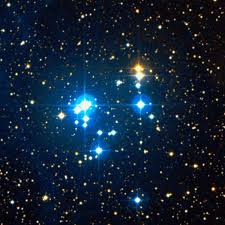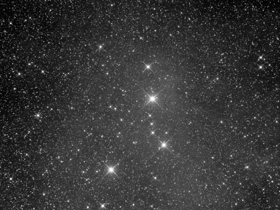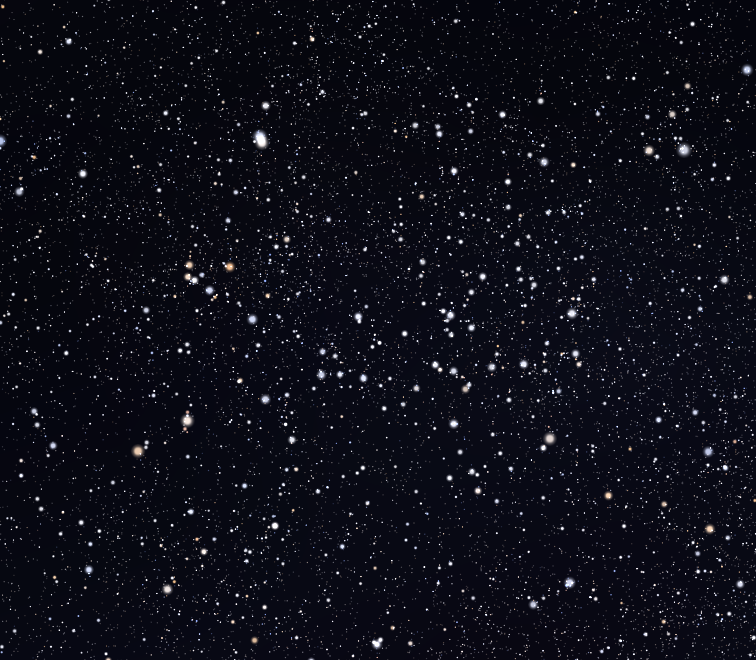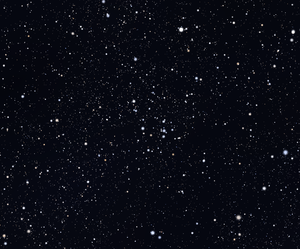STARLOG
A FAREWELL TO FALL
DECEMBER 20, 2017
| Observer: |
Tom Campbell |
| Location: |
College Station, Texas (Long: 96°17'W Lat: 30°37'N) |
| Telescope: |
Zhumell 12" f/5 Dobsonian |
| Eyepieces: |
Explore Scientific 18mm (83x)
Explore Scientific 11mm (136x) |
| Lenses: |
Celestron Luminos Barlow (2.5x) |
| Weather: |
The sky was mostly clear. Temperature was in the 60s (F) with a breeze that got a bit stronger as the evening progressed. |
My last observing session was on November 17. It was a quick session after a club meeting in breezy, partly cloudy conditions that were less than ideal. A few days ago, I glanced at the extended weather outlook for my area. I was hoping to get a few more observing sessions in this year, but holiday preparations and bad weather (including a freak snow storm) has prevented me.
I checked the ten-day outlook on the Weather Channel website a few days ago and discovered that the only remaining day this year where clouds and/or rain weren't forecast would be December 20, the last night of autumn. I kept my calendar clear and hoped for the best.
Finally, tonight was the night. I couldn't set up in the back yard because it was still pretty wet from recent rains. So I wheeled Zoomie out to the end of our front driveway.
Christmas lights everywhere. No need to let my eyes get dark adapted tonight. I glanced up at the sky. I could see several stars, but the transparency and seeing were awful. I could feel the dampness in the cooling night air. It wasn't the best night for observing, but at least I could see some stars. That's better than it has been in a long time. I went back to the garage to grab my chair and eyepieces.
Coming back out, I saw something glistening on my telescope tube. Dew. I haven't even been outside for two minutes. This was going to be a rough night. Oh well, this is my last chance to observe for the rest of the year. I'll take what I can get.
With the neighborhood Christmas lights, I was planning on bad transparency tonight, so already had an observing list that consisted mainly of open clusters. Several of them were part of the Astronomical League's Urban Sky program. It is a list of celestial objects that are still visible in skies where it is difficult to see the Milky Way. I think my sky tonight more than qualifies.
But first, I wanted to check out a few sights in Orion. I just finished writing an article in an upcoming issue of my local astronomy club's newsletter. There were a few objects I mentioned there that I've seen but never bothered to make log entries before.
| NGC 2169 (37 Cluster) |
Orion |
Open Cluster |
9:05pm CST |
 |
It has been a long time since I took a look at this cluster. I don't think I've ever observed it in the 12". At 138x, I counted 11 stars in the "3" section of the cluster and 6 stars in the "7" section. The top two stars in the diagonal line of the seven appear yellow. |
| |
| Collinder 69 |
Orion |
Open Cluster |
9:10pm CST |
 |
This large open cluster is up near the chin area of Orion. In the finder scope, I could detect five bright stars in a roughly Perseus shape. Two of those are named Meissa and Heka. Between these two stars are three fainter stars in a nearly straight line, reminding me of a miniature version of Orion's Belt. At 84x, dozens of stars are visible of varying magnitudes. It is difficult to tell which stars are members of the cluster and which ones are part of the Milky Way. |
| |
Orion was still rising, and most of my list tonight was in Cassiopeia, which was already setting and headed toward a large dome of light pollution. I better get to work on those before I lose my chance. |
| |
| Stock 2 (Muscleman) |
Cassiopeia |
Open Cluster |
9:20pm CST |
 |
This is a beautiful and huge cluster, with dozens of stars. At 84x, the cluster more than fills the field of view. Near one end is a very bright pair of stars. It's not quite as impressive as the nearby Double Cluster, but still impressive in its own right. |
| |
| Stock 23 (Pazmino's Cluster) |
Camelopardalis |
Open Cluster |
9:30pm CST |
 |
This cluster lies right on the line between Camelopardalis and Cassiopeia. It's pretty easy to find and appears as a small smudge in the finder scope. There are several bright members of various magnitudes. The stars appear to be clustered in groups of different shapes. For instance, I saw a diamond shape and an asterism similar to Sagitta with the feathers of the arrow being the brightest two stars. On the other side of the cluster is a triangle of stars, and a double-arced bird like a child would draw. Very interesting! |
| |
| Trumpler 3 |
Cassiopeia |
Open Cluster |
9:50pm CST |
 |
This is a nice grouping of somewhat faint stars. It looks like a small fuzzy patch in the finder scope, but at 84x, I could detect a couple dozen stars of varying magnitudes. It has a roughly circular shape. All of the stars appeared white, with the exception of a single fainter star near the middle of the cluster, which appeared yellow-orange. |
| |
| ι Cas |
Cassiopeia |
Multiple Star |
9:55pm CST |
This star system was along my starhop so I thought I'd log it. The primary is a bright creamy white and the companion is much fainter and pretty close at 84x. The pair looks very nice.
When looking through my notes later, I discovered this star system actually contains 5 stars, 3 of which can be easily seen visually. I saw the A and C components. The B component was even closer to the primary and required a bit more power to resolve. I'll have to look at this one again soon. |
| |
| Collinder 463 |
Cassiopeia |
Open Cluster |
10:00pm CST |
 |
This is a huge cluster, more than filling the field of view at 84x. It has an overall crescent shape, with several dozen stars visible. The cluster is very open, but there are clumps of stars here and there of varying magnitudes. The finder scope shows nothing there, but when you look in the eyepiece you can see dozens of stars. I really like this cluster. |
| |
Done with my main targets in Cassiopeia, I turned once more toward Orion. Messier 42 (the Great Orion Nebula) wasn't on my observing list, but I couldn't resist the urge to take another look at it. It appeared as a beautiful forest green cloud of nebulosity.
Messier 43 was a small faint oval wisp along one edge and the Trapezium cluster was nestled snugly in its crib nearby. I cranked up the magnification to 211x and looked closer. The E star was tiny and dim, but it was definitely there. I didn't bother looking for the F star tonight. Even at this modest magnification, the view was starting to get a little mushy.
I nudged the scope down a hair to nearby Collinder 72, the Lost Jewel of Orion. To me, this cluster reminds me of a shovel with a short T-shaped handle. The stars gleamed intensely.
Wow, I don't remember them ever looking this bright before. I looked away and put on my glasses, which were hanging around my neck. The glasses were fogged up completely. Cleaning them off, I took a look at the eyepiece. It was fogging up a bit, too. That explains the stars looking different than normal.
My telescope was dripping with dew and I knew I was fighting a losing battle. Reluctantly, I packed everything away for the evening. I had seen a few new objects tonight, so I felt good about my short night.





